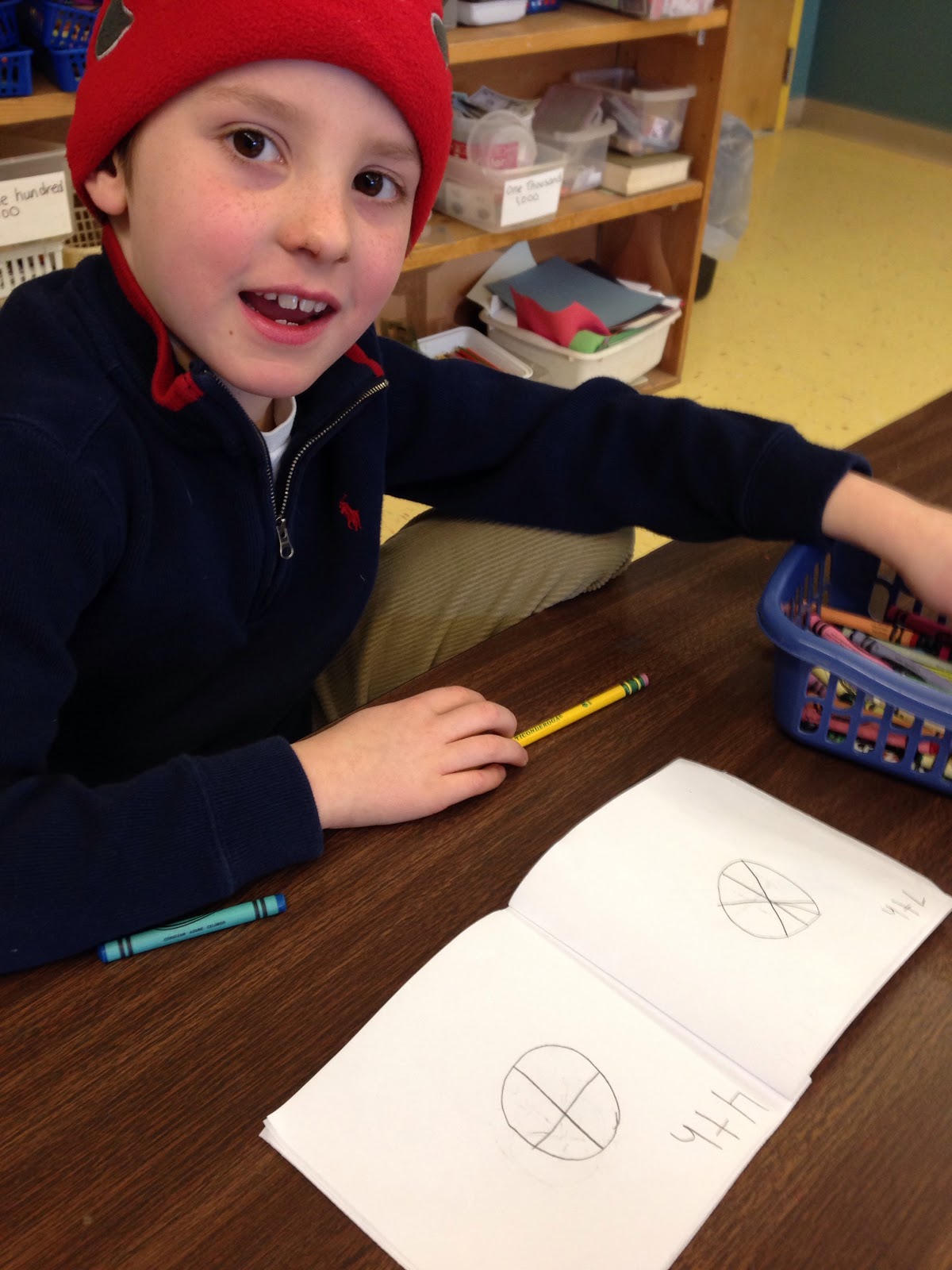We recently completed our unit called
Pockets, Teeth, and Favorite Things. The unit focused on data collection. The term data was explained to the students as the facts or information we collect about people and things in our world. There was ample opportunity for real world connection to clarify ideas in this unit. The students surveyed their friends about their favorite pets (or other favorite things), sorted, and then represented this data in ways that could be understood by others.
We started the unit with a brief survey of everyone's favorite weekend activity. The students wrote down their favorite activities and put them on our large classroom chart. Once everyone's activity was present, it was time to organize our data into a meaningful way that could be easily understood.
 |
| Placing data on our classroom chart |
 |
| The very beginnings of our class data collection |
In subsequent math classes, we made graphs of the data. The students noted that it was much easier to interpret and analyze the data once it was clearly organized in some way.
We also talked about Venn diagrams and how to sort data by different attributes. The students made their own Venn diagrams and sorted data by two attributes. Partners took turns guessing attributes and sorting information. This early work in classification provided experiences in considering only certain attributes of an object while ignoring others.
 |
| Sorting objects by their attributes |
 |
| Using Venn diagrams to help sort the data |
 |
| More sorting and discussion about attributes |

 |
| Noticing differences in data |
To further connect this unit to real life, we took advantage of our beautiful surroundings
and went outside on our monthly bird walk. This time even the 3rd graders joined us on our adventure. Students keep track of what birds we see outside, and back inside we enter the data on the ebird website and incorporate it in our classroom bird graph.
 |
| Outside on our bird walk |
Now it was time to represent our data clearly. Students used a variety of representations: line plots, bar graphs, pictures, pop up charts, and other creative means to show the amount of birds that were spotted. It was wonderful to see how each student approached this task with gusto and enthusiasm. The data we had collected held real meaning for them (these were birds we saw on our school property, after all!), and they each worked to their fullest potential to display the data clearly.

 |
| Beginning to represent our data |
 |
| A variety of representations were used |
During this unit, students were introduced to various frequency distributions in which each piece of data is represented by one symbol (e.g., an X, a picture, a sticker, a square, or even a sticky note). In using this kind of representation, students have to think through the meaning of two ways numbers are used in describing data: Some numbers indicate the value of a piece of data; other numbers indicate how often a particular data value occurs. The Second graders were able to describe the data by considering the frequency of each value, the mode, and the highest and lowest values.
By participating in an entire data investigation from start to finish, students encounter many of the same issues encountered by statisticians as they decide how to collect, keep track of, organize, represent, describe, and interpret their data. All this while having real life experiences to tie things together - interviewing friends, talking about their favorite things, and bird watching!
 |
| Sentiments from a Second grade mathematician |



























































